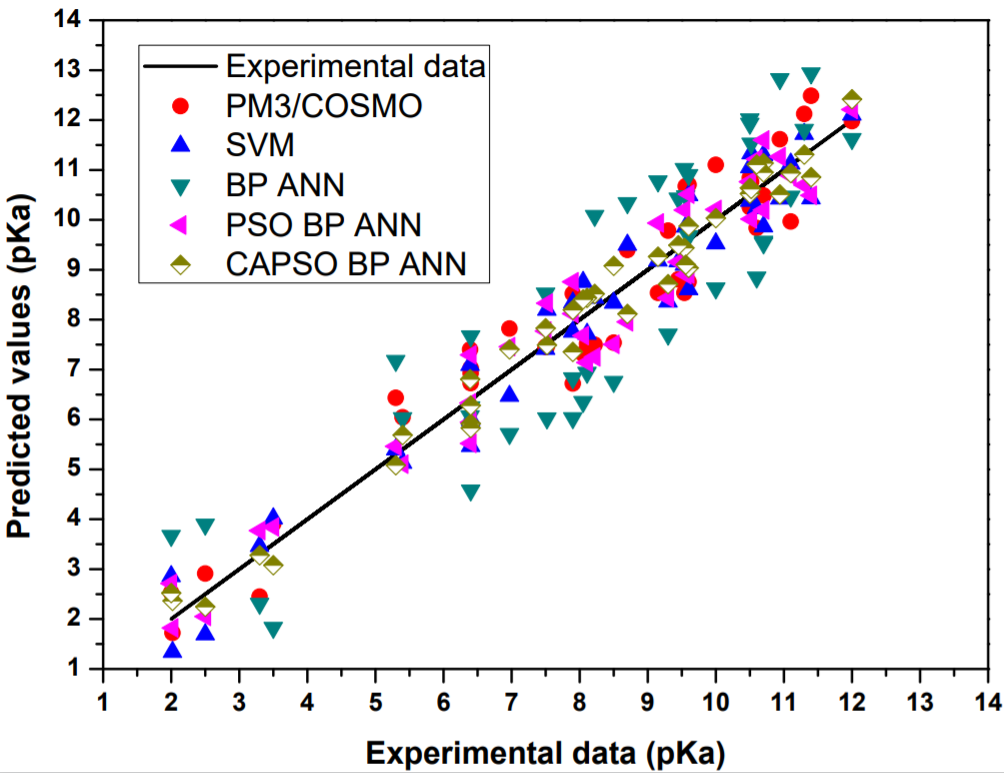Quantitative structure-activity relationship (QSAR) model is adopted to study the relationship between the chemical and physical properties of various substances and the structure. Through QSAR studies, the internal relationship between the invisible structure and the activity can be obtained. In this paper, a novel chaos-enhanced accelerate particle swarm algorithm (CAPSO) is proposed, which is used to molecular descriptors screening and optimization of the weights of back propagation artificial neural network (BP ANN). Then, the QSAR model based on CAPSO and BP ANN is put forward, hereinafter referred to as CAPSO BP ANN model. The prediction experiment showed that the CAPSO algorithm is a reliable method for screening molecular descriptors and the five molecular descriptors obtained by CAPSO algorithm could well characterize the molecular structure of each compound in pKa prediction. The experimental results also showed the CAPSO BP ANN model has a good performance in predicting the pKa values of various compounds, the absolute mean relative error, root mean square error, and square correlation coefficient are respectively 0.5364, 0.0632, and 0.9438, indicating the higher prediction accuracy and correlation. The proposed hybrid intelligent model can be applied in all kinds of engineering design, prediction of physical and chemical properties and intelligent calculation.

